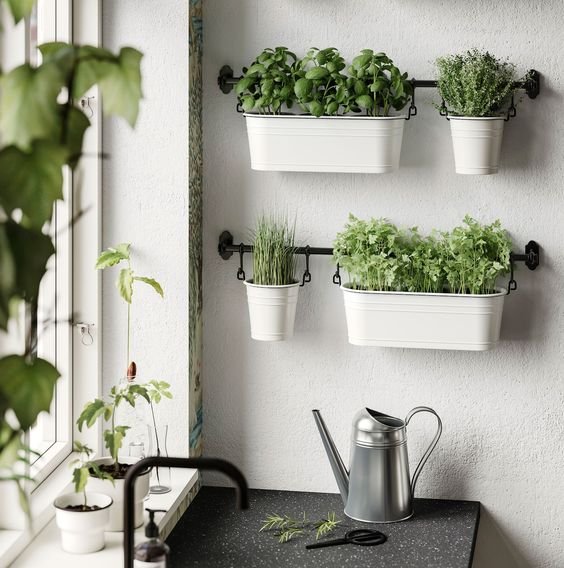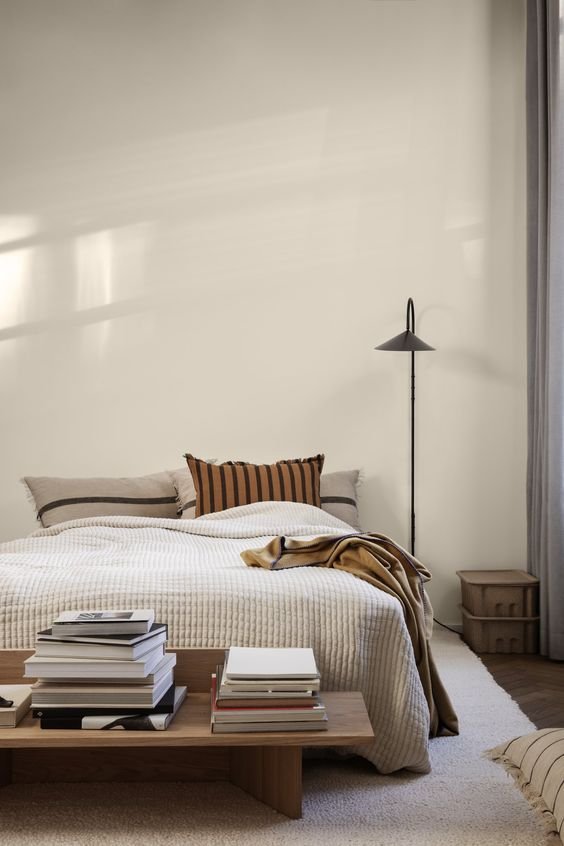11 Ideas for Creating a Healthier Home
The concept of a healthy home goes beyond aesthetics; it's about creating an environment that promotes physical and mental health, reduces stress, and enhances the quality of life for its occupants.
While we’re bringing you a wide range of healthy home tips, by no means should you feel the pressure to adopt them all! Simply tweaking a few things around the home could well have a profound impact on how your home makes you feel, so start off small (maybe a few air-purifying plants or a new pillow) and go from there…
Steps you can take towards a healthier home
Prioritise Indoor Air Quality
Indoor air quality is crucial for a healthy home. To improve it, consider these steps:
Invest in air purifiers with HEPA filters to remove pollutants.
Ensure proper ventilation to reduce indoor pollutants.
Choose low-VOC or VOC-free paint and finishes for walls and furniture. VOC stands for Volatile Organic Compounds, which can be toxic to inhale as vapours or gases.
Use houseplants known for their air-purifying properties, such as snake plants or peace lilies.
Favour Natural Light and Views
Ample natural light has a significant impact on mental health. It can reduce stress, improve mood, and enhance productivity. If you’re building your home from the ground up, ensure your home design incorporates large windows, skylights, or glass doors to allow natural light to flood your living spaces. Additionally, provide views of nature or your garden to connect with the outdoors. If you’re working with what you’ve got in an existing home, be sure to always open your curtains during the day, or choose curtains that are sheer to allow the light to filter through.
Work with Sustainable Materials
Sustainable and non-toxic materials include things such as reclaimed wood, bamboo flooring, recycled glass, and low-impact paints. These materials are not only eco-friendly but also reduce exposure to harmful chemicals. So with any new project, research how you can work with materials like these, especially in areas where you spend a lot of time, such as the living and bedrooms. Your builder will be a great source of knowledge in this department and may be able to get you trade discounts, too.
Declutter and Simplify
Clutter can add to stress and anxiety, so decluttering can do wonders for fostering a sense of calm and order. Ensure every item has its place and purpose. Utilise storage solutions to keep belongings organised and out of sight, which will make your living spaces seem more serene without having to do a major purge of your possessions.
Create a Healthy Kitchen
The kitchen is the heart of the home, so make it a healthy one. Use non-toxic cookware, store food in glass containers, and consider investing in a water filtration system if you live in an area where the water may not always be safe for drinking. Incorporating a kitchen garden or having a selection of fresh herbs growing on your benchtop not only brings life (literally!) to your space, but it should encourage you to add more herbs to your cooking too. If you have an old range hood, get it serviced to ensure it’s working effectively. Range hoods improve the air quality of your kitchen after cooking as they remove odours, smoke and fumes. Always turn yours on, even if you’re simply frying an egg!
make Technology mindful
There are a number of ways you can use technology to enhance your wellbeing at home, including employing smart thermostats for temperature control, air quality monitors and lighting system that mimic natural light patterns (great for gloomy winters!). Anything that can help to give you a more comfortable living environment will be a great asset to your home long term.
Invest in Comfortable and Ergonomic Furniture
Furniture that supports your posture and wellbeing is especially important if you regularly work from home. Properly designed chairs, desks, and beds can reduce physical discomfort and improve overall health. Instead of buying online, make sure you visit stores in person so you can really get a feel for your furniture before you buy it.
Find Ways to Reduce Noise
Sound has a significant impact on our wellbeing. Minimise noise pollution in your home with acoustic panels, carpets, curtains, and furniture designed to absorb or block sound. A quieter environment promotes relaxation, better sleep and an all-round more comfortable feeling for you, your family and your guests.
Incorporate Biophilic Design
Biophilic design integrates elements of nature into your interior. Incorporate natural materials, indoor plants, and nature-inspired artwork to create a connection with the outdoors. Studies show that biophilic design can reduce stress and increase productivity.
Create a Healthy Sleep Environment
Optimise your bedroom for quality sleep. Choose a comfortable mattress and pillows, ensure the room is dark and quiet, and maintain a comfortable temperature. Instead of keeping your phone next to your bed, an option is to buy an alarm clock, which ensures you’ll wake up on time but won’t be tempted to fall asleep to Instagram reels. Eliminating all blue light-emitting devices helps to create a more conducive zone for sleep so it might be time to get rid of the TV set, too…
Maintain a Clean and Healthy Environment
It goes without saying that regular cleaning and maintenance are essential to reduce allergens, dust, and potential pollutants in the home. Next time you’re in need of new cleaning products, switch to eco-friendly ones to minimise exposure to harmful chemicals.
Creating a healthier home is not a one-size-fits-all endeavour. It's about designing a space that supports your physical and mental wellbeing, aligning with your values and lifestyle. Anything you can do to improve your quality of life at home is a great stepping stone towards a healthier you.
All images sourced from Pinterest





